Quartzite is a metamorphic rock consisting largely or entirely of quartz1. In the vast majority of cases, it is a metamorphosed sandstone.
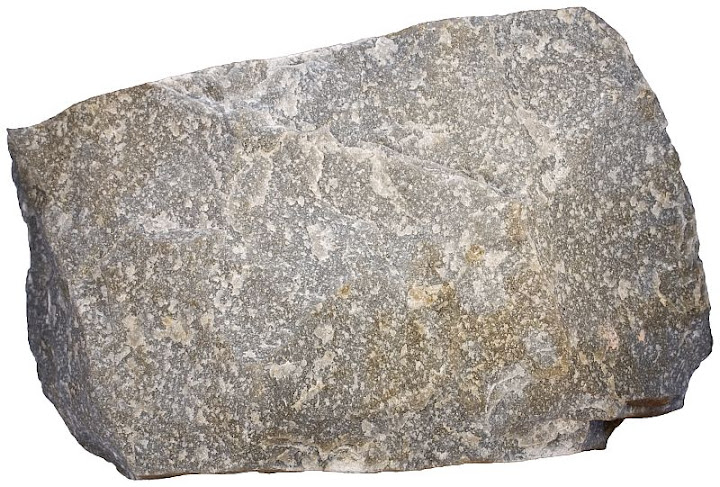
Pure quartzite is grayish rock with only one dominating mineral — quartz. Width of sample 14 cm.
The transition from sandstone to quartzite is gradational. There is little mineralogical change. Quartz, the main constituent of sandstone, is not altered to other minerals if the sandstone is relatively pure, but it is recrystallized during the metamorphism. Original grainy look of sandstone is lost to a variable degree. Some quartzites are still similar to sandstones, only more strongly held together, while others are completely recrystallized so that all the features like fossils or original texture are obliterated and grain boundaries have disappeared. It is difficult to say where the boundary between these rocks exactly is. Rock sample that may be quartzite for one geologist might be strongly cemented sandstone for another.
Another common mineral in sandstone is iron oxide hematite. It gives reddish color to sandstones and it too is not altered during metamorphism. Most other minerals, however, can not tolerate high temperature and pressure as well. Hence, impure sandstones may give rise to quartzites that contain minerals like mica, sillimanite, kyanite (metamorphosed clay minerals), pyroxenes and amphiboles like diopside and tremolite (metamorphosed dolomite plus silica from sandstone), and even wollastonite (metamorphosed pure calcite cement with silica added) and many others. Quartz-rich muddy sediments usually metamorphose to schist because there is too much aluminum-rich clay minerals. Quartzite usually is the result of metamorphism if the source material is relatively pure sandstone.
Quartzite is a common metamorphic rock because its protolith sandstone is very widespread. Quartzite outcrops can be found in many mountain ranges all over the world. It usually is associated with current or former mountain ranges because mountain-building is the process that is responsible for the deep burial and associated metamorphism that transforms sandstone to quartzite. Quartzite is a very hard rock. It tolerates weathering well because its main constituent quartz is very resistant to both physical and chemical disintegration. These properties make quartzite a useful building stone which is used to build walls, stair steps and floors. It is used in road construction and as a railway ballast.
You may encounter terms like orthoquartzite and metaquartzite. The former is actually a very pure unmetamorphosed quartz-rich sandstone which is more commonly known as quartz arenite. Metaquartzite is more or less synonymous with quartzite. These terms are old-fashioned and little used nowadays2.
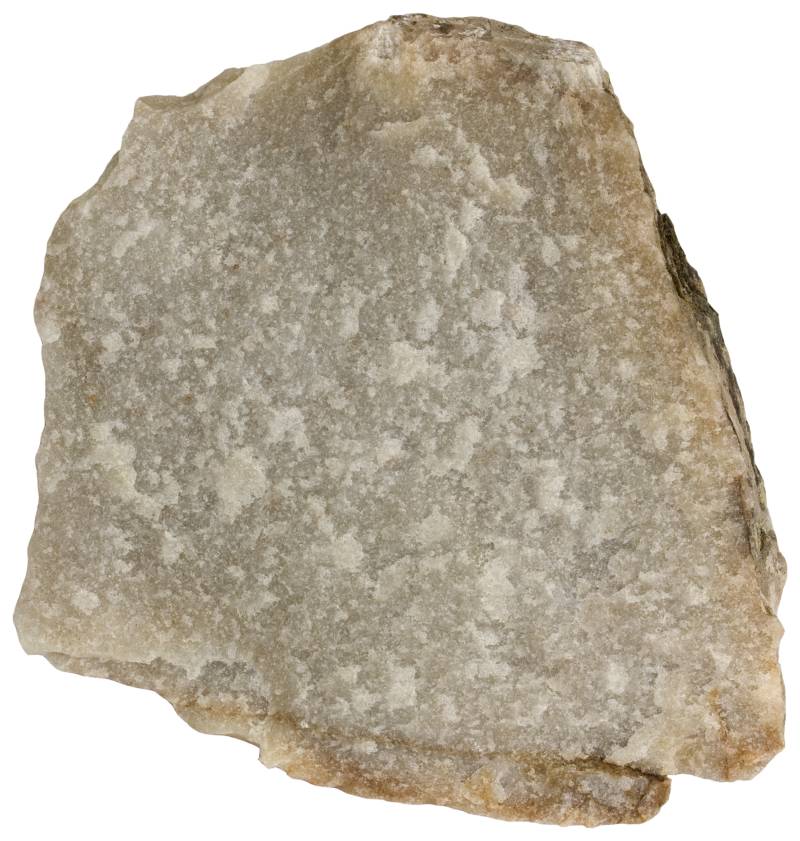
Pure quartzite from Telemark, Norway. Width of sample 9 cm.

It is very tough and durable rock that contains no pores and unlike many other metamorphic rocks it is not fissile or foliated. Width of sample 11 cm.

Some relict bedding may be preserved. Width of sample 11 cm.

Quartzite may resemble marble at first. You may try to scratch the surface with a needle. If you can do it, then it is probably marble. Another and even better test is to use acid. Calcite, the main constituent of most marbles, reacts vigorously with dilute hydrochloric acid but there is no reaction with quartz. Width of sample 13 cm.
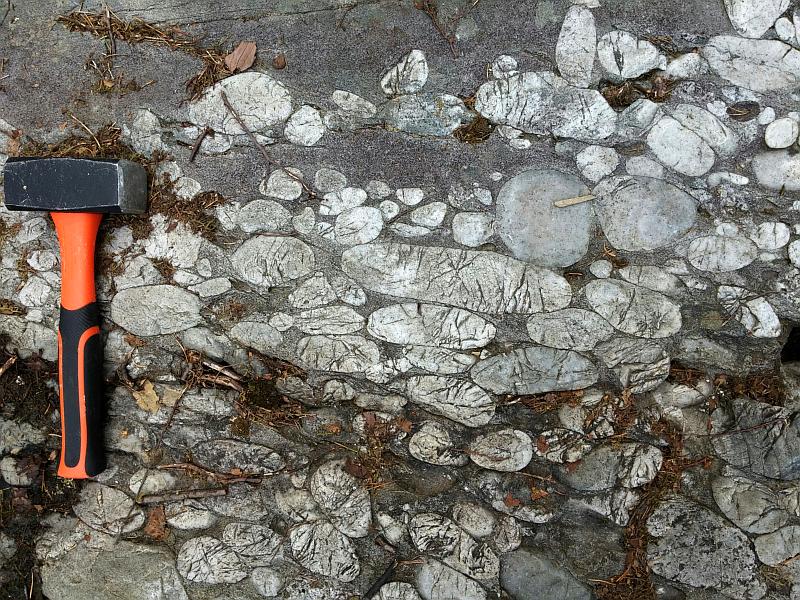
These slightly flattened clasts in conglomerate are made of quartzite. The rock formed in the Ordovician and it was once a riverbed. The outcrop is near Bergen in Norway.
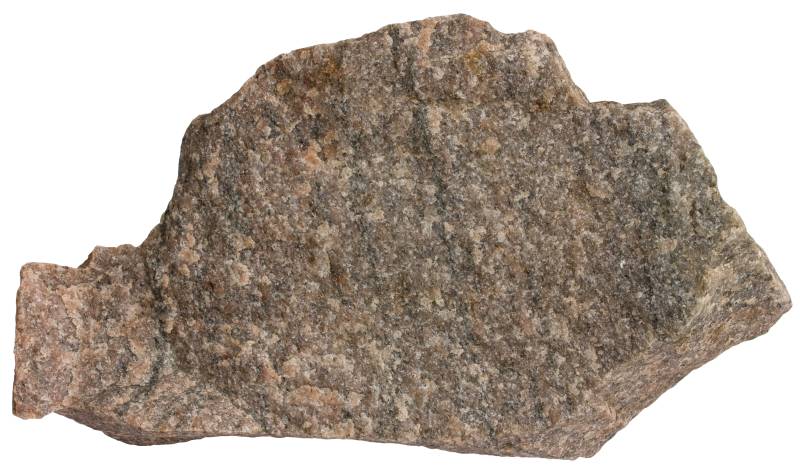
Feldspar-rich quartzitic rock – metamorphosed arkose. Aust-Agder, Norway. Width of sample 19 cm.

This dry cascading riverbed in Norway is composed of quartzite.

Red color is usually given to the rock by iron oxide hematite. Width of sample 9 cm.
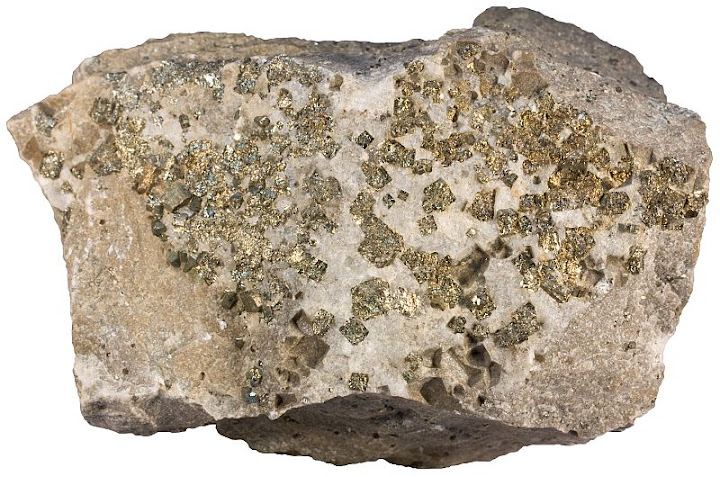
It is a vein of quartz with pyrite cutting through quartzite. Width of sample 11 cm.

The sample from Finland is either strongly cemented sandstone or weakly metamorphosed quartzite. It is old (1.4 Ga) and a part of crystalline basement. Hence, it is usually considered to be a metamorphic rock. Width of the sample 4 cm.

This wall in Western Ireland (Connemara) is built of local quartzite blocks.

Wall in Santorini, Greece. This material is local as well. Santorini is not entirely volcanic island. The highest point of the island is a non-volcanic mountaintop of the Cyclades range.
References
1. Barth, T. F. W. (2007). Quartzite. In: McGraw Hill Encyclopedia of Science & Technology, 10th Edition. McGraw-Hill. Volume 14. 722.
2. Pettijohn, F. J., Potter, P. E. & Siever, R. (1973). Sand and Sandstone. Springer.
Leave a Reply